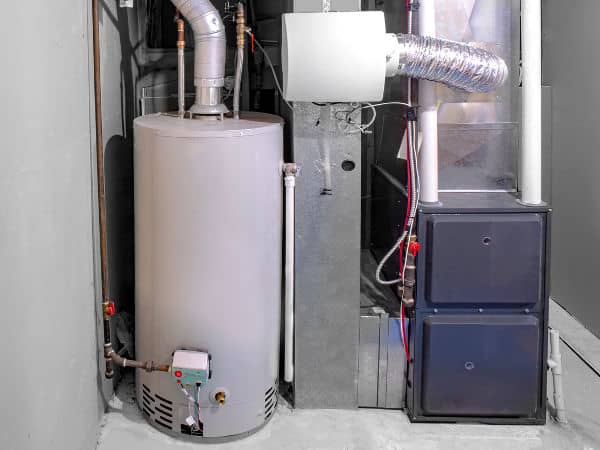How to Maintain Your Home's Hot Water System Functioning Well
How to Maintain Your Home's Hot Water System Functioning Well
Blog Article
We've found this great article on Tips on Maintaining a Water Heater below on the web and thought it made sense to relate it with you here.

Hot water is necessary for everyday convenience, whether it's for a rejuvenating shower or cleaning meals. To ensure your hot water system runs efficiently and lasts much longer, routine maintenance is key. This write-up supplies useful suggestions and insights on just how to keep your home's hot water system to avoid disruptions and pricey repair services.
Introduction
Keeping your home's warm water system might appear challenging, yet with a few simple actions, you can ensure it runs smoothly for years ahead. This guide covers every little thing from understanding your warm water system to DIY upkeep tips and recognizing when to hire specialist help.
Value of Maintaining Your Warm Water System
Regular maintenance not just extends the life expectancy of your warm water system however likewise guarantees it operates efficiently. Overlooking maintenance can result in lowered performance, higher energy expenses, and also early failing of the system.
Indicators Your Hot Water System Needs Maintenance
Understanding when your warm water system requires interest can stop major problems. Keep an eye out for signs such as irregular water temperature level, unusual noises from the heating system, or rustic water.
Understanding Your Warm Water System
Before diving into maintenance jobs, it's handy to recognize the fundamental elements of your hot water system. Generally, this includes the hot water heater itself, pipelines, anode rods, and temperature level controls.
Month-to-month Upkeep Tasks
Regular monthly checks can assist capture small issues prior to they escalate.
Purging the Hot Water Heater
Flushing your hot water heater gets rid of sediment accumulation, enhancing efficiency and extending its life.
Checking and Changing Anode Rods
Anode rods stop corrosion inside the container. Examining and replacing them when worn out is critical.
Checking and Adjusting Temperature Level Setups
Adjusting the temperature level setups makes certain optimum performance and safety.
DIY Tips for Upkeep
You can execute numerous upkeep tasks on your own to maintain your hot water system in leading problem.
Checking for Leaks
Regularly evaluate pipelines and links for leakages, as these can bring about water damages and greater costs.
Examining Stress Alleviation Valves
Examining the stress safety valve guarantees it works properly and stops extreme pressure accumulation.
Shielding Pipelines
Shielding warm water pipes decreases heat loss and can save energy.
When to Call a Specialist
While do it yourself upkeep is helpful, some issues require professional expertise.
Complicated Problems Requiring Professional Aid
Instances consist of major leaks, electric troubles, or if your water heater is constantly underperforming.
Regular Expert Maintenance Benefits
Professional upkeep can consist of extensive inspections, tune-ups, and making sure compliance with safety and security requirements.
Final thought
Regular upkeep of your home's hot water system is necessary for efficiency, durability, and cost financial savings. By following these ideas and knowing when to seek specialist help, you can guarantee a trusted supply of hot water without unanticipated disruptions.
How to Maintain an Instant Hot Water Heater
Before tinkering with your hot water heater, make sure that it’s not powered on. You also have to turn off the main circuit breaker and shut off the main gas line to prevent accidents. Also turn off the water valves connected to your unit to prevent water from flowing into and out of the appliance. 2. When you’re done, you have to detach the purge valves’ caps. These look like the letter “T†and are situated on either side of the water valves. Doing so will release any pressure that has accumulated inside the valves while at the same time avoid hot water from shooting out and burning your skin. 3. When the purge valves’ caps are removed, you have to connect your hosing lines to the valves. Your unit should have come with three hoses but if it didn’t, you can purchase these things from any hardware or home repair shops. You can also get them from retail stores that sell water heating systems. Read the user’s manual and follow it to complete this task properly. When the hosing lines are connected, open the purge port’s valves. 4. You should never use harsh chemical cleaners or solutions when cleaning your unit. Make use of white vinegar instead. It should be undiluted and you’ll probably use about 2 gallons. 5. Now flush your water heater. This task should probably take about 40 minutes. We can’t give you specific directions for this because the procedure is carried out depending on the type, model and brand of your heater. With that being said, refer to the user’s manual. 6. When you’re done draining the unit, you have to turn off the purge port valves again. Remove the hosing lines that you earlier installed on each of the water valves. Put the valve caps (purge port) back in their respective places and be very careful so as not to damage the rubber discs that are found inside these caps. 7. Now that everything’s back in place, check your user’s manual again to find out how to reactivate your water heating system. 8. Once it is working, turn one of your hot water faucets on just to let air pass through the heater’s water supply pipes. Leave the tap on until water flows smoothly out of it. https://www.orrplumbing.com/blog/2014/september/how-to-maintain-an-instant-hot-water-heater/

As a serious person who reads about What Kind of Maintenance Do Water Heaters Need?, I think sharing that article post was essential. Sharing is nice. Helping others is fun. Thank you so much for going through it.
Click Here Report this page